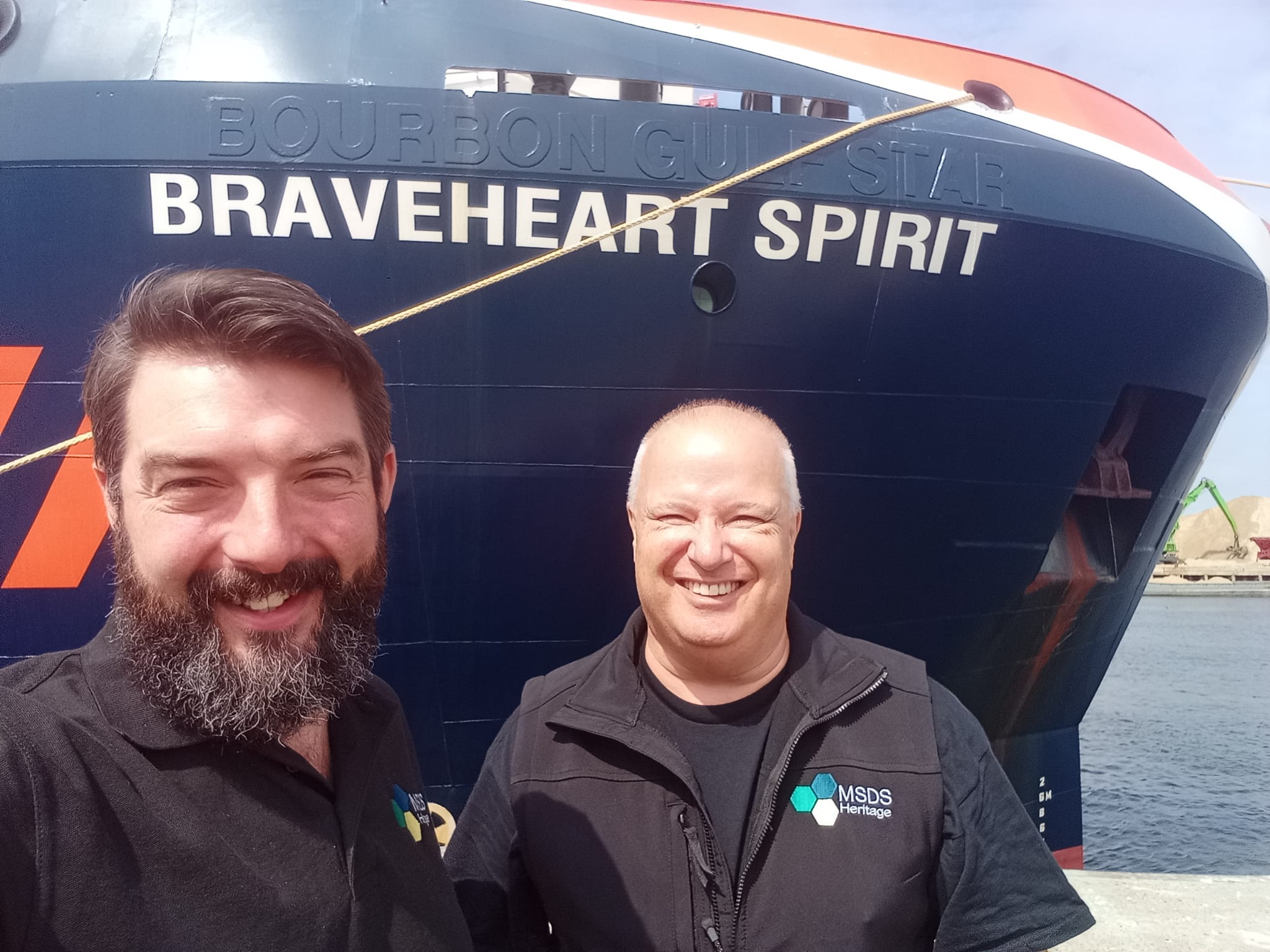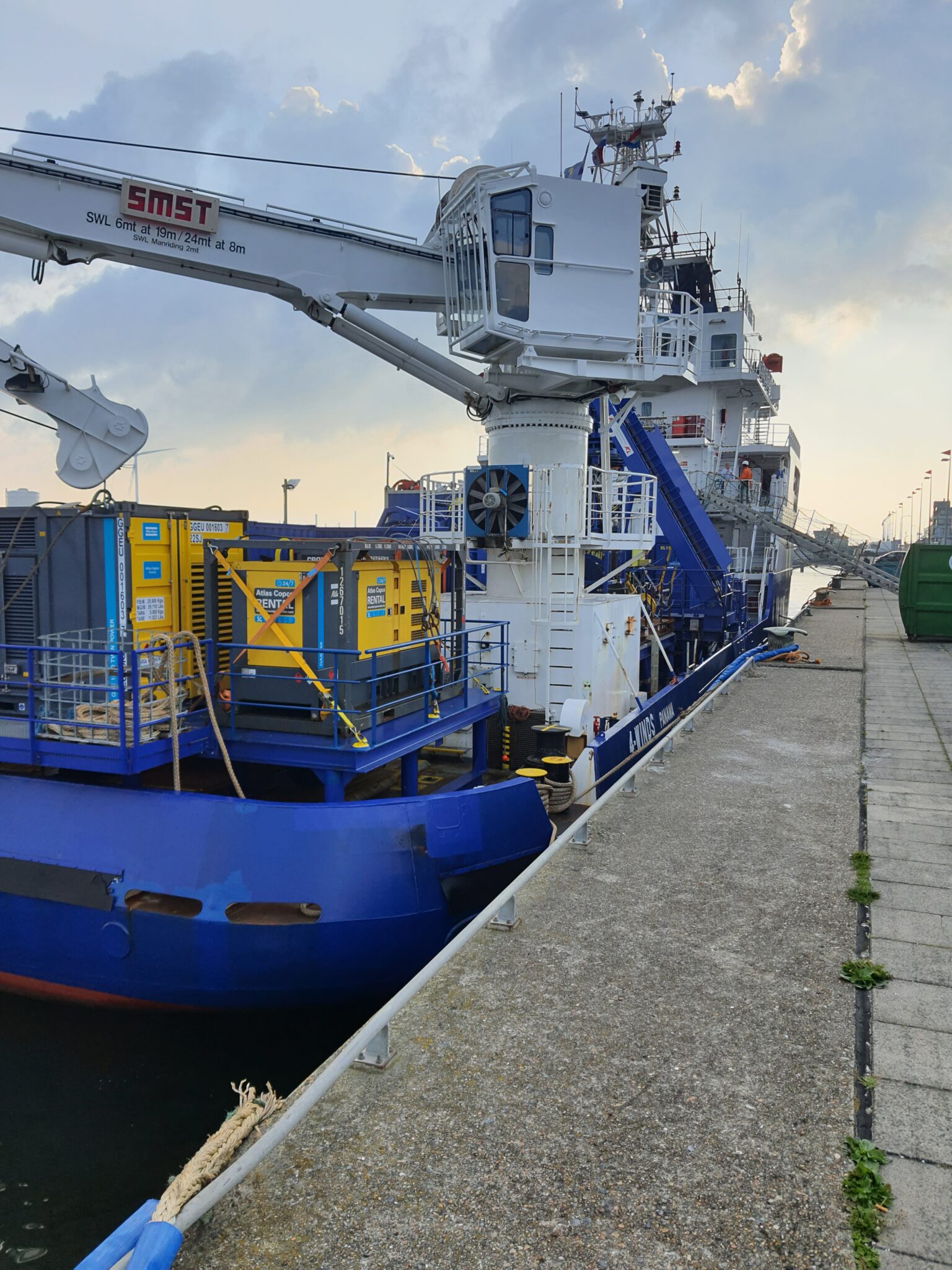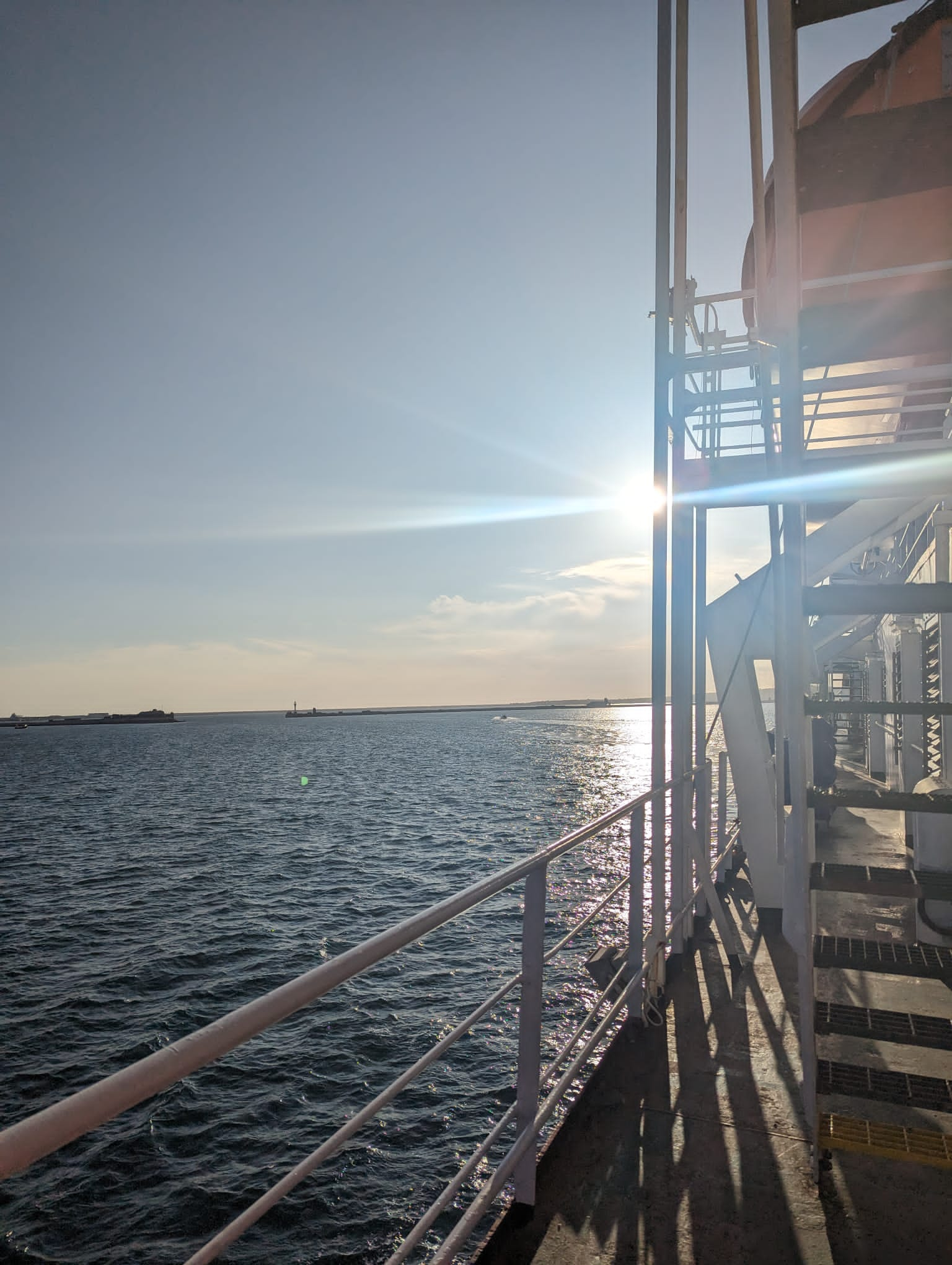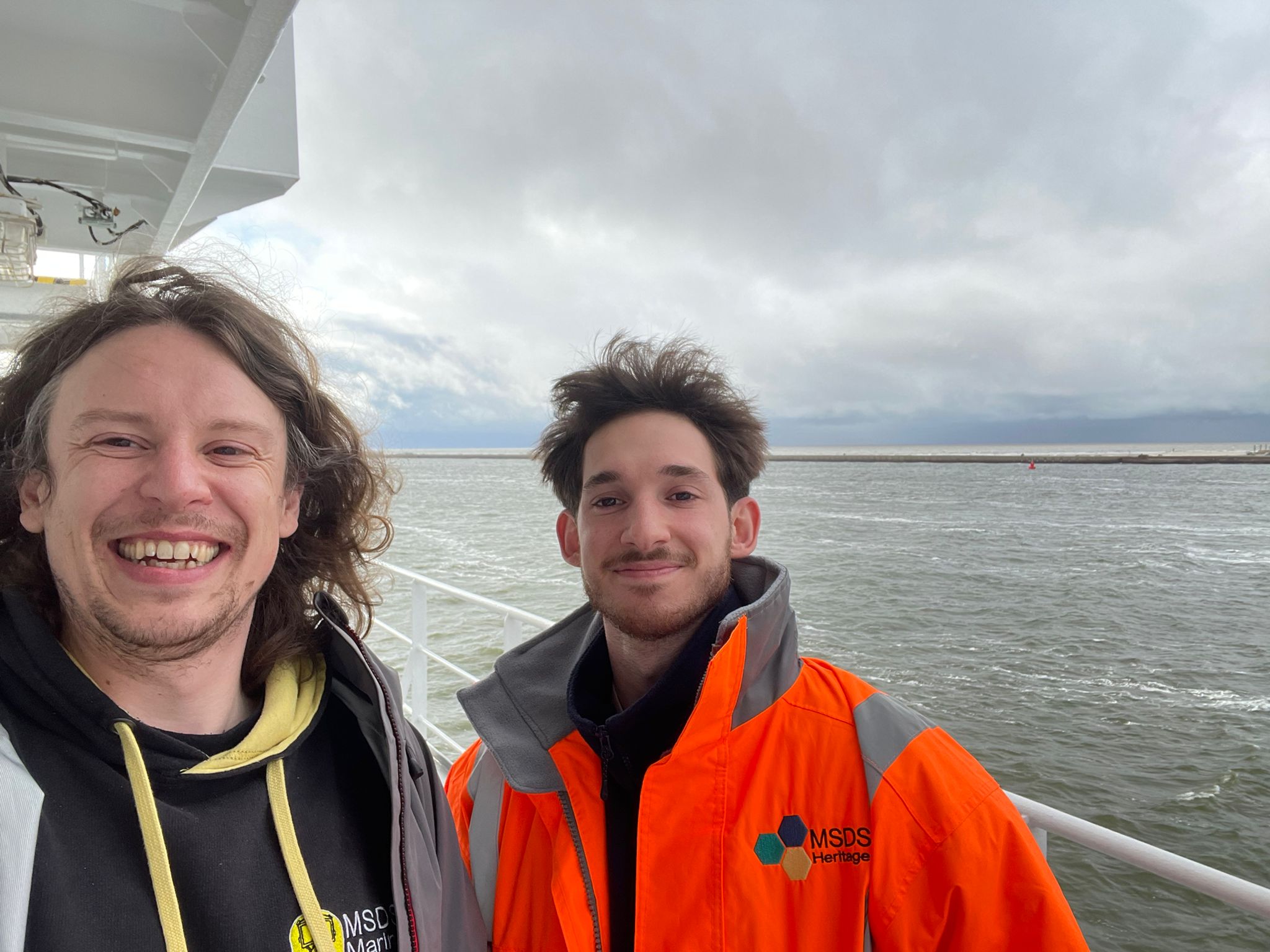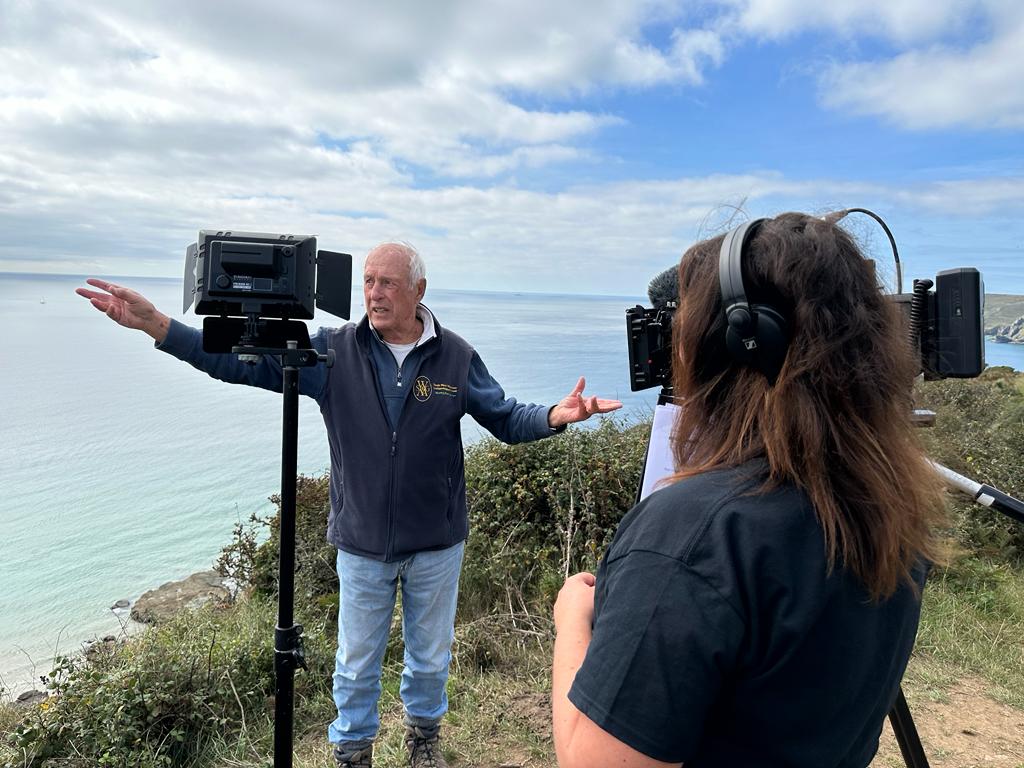The work of a maritime archaeologist is extremely varied and whilst some of it can be diving in beautiful locations a lot is office based! Perhaps less known is the work we do offshore to support offshore wind and other large infrastructure projects. In this blog Alistair Byford-Bates explains what working offshore in this role can be like.
It is the lot of most marine archaeologists that the opportunities to work offshore on large infrastructure projects are few and far between, and that once the initial excitement wears off it is sadly generally not as glamorous as people think. It would be nice to say clear blue waters, warm weather, and shiny modern ships and equipment were the standard (and they are for some of us like MSDS Marine’s Mat Polakowski), however the reality is sometimes very different with mixed weather, breakdowns and appalling underwater visibility to be contended with more common than we would all like.
The ships that offshore campaigns operate from, work effectively in two cojoined parts, namely the ship itself under its captain and crew, and the subsea operations part comprising the WROV (Work Class Remotely Operated Vehicles) team, UXO (Unexploded Ordnance) specialists and archaeologists with a Party Chief or Offshore Vessel Manager running the operation on behalf of the contractors, following the methodology agreed with the clients who will also have representatives present on their behalf. Despite what the name implies, the Party Chief is not there to check everyone has a great time but to make sure all parties work together for the benefit of the project.
So, what does a day working offshore in the North Sea tend to look like, and what do we as archaeologists embedded into a project as client representatives, or contractor’s actually do? Operations run around the clock with people working 12 hours shifts generally from 6AM to 6PM and 6PM to 6AM seven days a week and depending on the project on two- or four-week crew or team rotations, though many people will work through a number of these cycles. The ship’s deck crew, stewards and catering staff will often be there for several months or longer in some cases. Mealtimes also reflect this with meals served four times a day, and menus reflecting the different shift patterns.
At the start of each shift teams carry out handovers, informing their opposite number of where tasks are at, what is currently occurring, and where things are in relation to the current task plan. As you may or may not be aware, for the most part the role of the offshore archaeologist comprises the ground truthing of geophysical targets as part of the campaign to identify potential UXO and archaeology. This consists of moving from previously identified targets to identified targets in a systematic way, with the WROV visually inspecting a location, followed by dredging, if required to expose the target, and further examination to identify the target. If appropriate or required, the target may also be moved to a wet storage location following its inspection and identification, so that it is no longer at risk, or a hazard to further work. UXO is left in situ with a large exclusion zone, and then later disposed of, or detonated. Until something is considered non-ordnance it remains the purvey of the UXO specialists, who then hand over to the archaeologists once they are happy it is safe to do so.
We may have an idea and suspect what something is from the geophysics data, but until we visit it, we can’t say for certain what it is! Some are relatively obvious, but a large percentage turn out to be the detritus of our modern world where out of sight and mind come to the fore. In some case material snagging on older wrecks or geological outcrops are the cause of more interesting material being found, but in a lot of cases what is found is things thrown or lost overboard, once finished with, or damaged beyond repair. It’s incredible what can be found 100 miles offshore! When assessing the geophysical data the archaeologists are looking at the more ephemeral, expecting wooden ships, and related material, whereas the UXO assessment is looking for ordnance in all its guises. There is a degree of overlap, and therefore everything is potential UXO until identified otherwise, iron cannons being a good example of are they archaeological or are they modern ordnance?
Depending on the vessel we generally watch the work of the WROV on monitors from a separate office, until such time as we need to be directly involved in the investigation of the target when we’ll join the WROV operators in ‘the ROV shack’ to direct the excavation and request specific images, video, or measurements using the lasers mounted on the WROV. The excavation of a target to identify it can take minutes if it is on the surface, or in some cases literally days to excavate down to, if it is buried in deep mobile sand for example. Working with the surveyor, and the UXO contractors, we’ll then populate the target investigation report with images and information on the target, how and where it was in relation to its originally reported location, what it is, and whether it was left in situ, or moved outside of the working area for the project. The reports then go to the client for approval, before going to the regulator, who may request further action, in the case of targets that are deemed worthy of further investigation, defining, or even recovery and removal.
Large infrastructure projects are controlled by the licence area within which the development can occur, then within this is the proposed routes of cables, and the locations of the wind turbine generators, interconnectors, and substations. These will have been planned to avoid where possible the targets (both UXO and archaeology) identified during the geophysical surveys. Where targets are unavoidable, they are investigated to see if they can be moved, or whether further micro-siting of the cable or infrastructure are required to work around them. Objects, depending on their UXO and archaeological status) can then be moved to locations within the licence areas where they will not be impacted by the development.
Generally, at the end of each shift following the handover, the gym, relaxation, and sleep beckon, dependent on inclination, as well as food. As with many projects where you are only one small element in the operation, there is occasionally time during the shift to go to the gym or relax whilst the vessel is moving between targets, or maintenance or repairs are occurring, or just catch up on outstanding paperwork. This is the general routine we work on a two- or four-week cycle, with the aforementioned slack periods during transits, poor weather, or the occasional breakdown or maintenance window.
If you have ever wondered what its like to be a woman working at sea then check out this blog from Rebecca Ferreira! If this sort of work appeals to you, or you are heading offshore for the first time then read our blog with the top ten things you need to know before working offshore.

